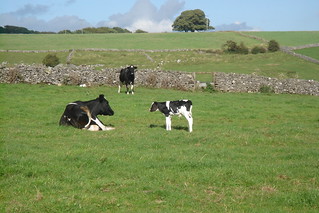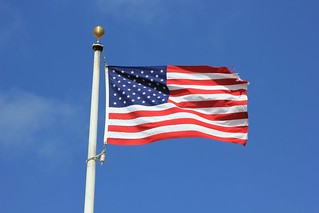The American Feed Industry Association submitted comments Monday to the U.S. Food and Drug Administration on what AFIA describes as the most massive overhaul of animal food industry regulations since 1958. The comments, which address the Food Safety Modernization Act "Current Good Manufacturing Practices and Hazard Analysis Risk-Based Preventive Controls for Food for Animals" rule are 100-plus pages in length and cover five major areas.
Nineteen regional and state feed associations also signed on to AFIA's letter as a statement of their support.
"AFIA and its membership are extremely satisfied with the comments generated during the brief, yet productive, comment period," said Richard Sellers, AFIA senior vice president of legislative and regulatory affairs. "If more time had been allotted, we would have ideally provided FDA with more
Nineteen regional and state feed associations also signed on to AFIA's letter as a statement of their support.
"AFIA and its membership are extremely satisfied with the comments generated during the brief, yet productive, comment period," said Richard Sellers, AFIA senior vice president of legislative and regulatory affairs. "If more time had been allotted, we would have ideally provided FDA with more
examples of the overall impact of the proposal. However, given our time constraints, AFIA focused primarily on how this rule would impact the many varied segments of the industry to strive for practical and easily understood requirements by the industry, FDA and state investigators that will inspect and audit these new requirements."
One major area of AFIA's comments is its focus on Current Good Manufacturing Practices, or CGMPs. The organization stated CGMPs should be "more practical and less prescriptive," which will allow its members and the industry as a whole to be more innovative and have a better understanding as it is the first time many companies will use CGMPs, as they have previously only been a requirement for medicated feed. AFIA is also requesting FDA to simplify terms and concepts used throughout the rule such as replacing "utensils" with "tools" or "sanitation" with "cleaning," and seeks assurance the rules are dedicated to the animal food industry not the human food industry, which they originated from.
"It is quite clear the majority of the proposed CGMP requirements come directly from the human food rule and it has been left up to the feed industry to prove why the requirements are unnecessary as many do not relate to animal food in the slightest," remarked Sellers. "A blatant example is where the proposed rule suggests ill employees can contaminate animal food, hence making the animal sick."
AFIA commissioned a report by Dr. Tim Goldsmith, Center for Animal Health and Food Safety at the University of Minnesota, to provide an outside evaluation on the potential spread of human illness to animals through animal food. Goldsmith's final opinion was "it is unlikely that animals would get sick from pathogens spread from humans involved in feed manufacturing to livestock through animal feed." As a result, AFIA recommended the language suggesting illness from humans is transmittable to animals via animal food be stricken from the proposed rule.
In its comments, AFIA states, "...FDA's proposal for delayed compliance dates based on size (one year for regular mills, two years for small businesses (SBs) and three years for very small businesses (VSBs)) for both the Current Good Manufacturing Practices (CGMP) rule and preventive control rule is impractical." AFIA is instead recommending changes to FDA's suggested phase-in process.
"AFIA would like FDA to consider a phase-in approach to give small to medium-sized feed mills additional time to implement CGMPs followed by the hazard analysis and preventive controls," said Sellers. "AFIA is pushing for one, two and three-year implementation periods for CGMPs and two,
One major area of AFIA's comments is its focus on Current Good Manufacturing Practices, or CGMPs. The organization stated CGMPs should be "more practical and less prescriptive," which will allow its members and the industry as a whole to be more innovative and have a better understanding as it is the first time many companies will use CGMPs, as they have previously only been a requirement for medicated feed. AFIA is also requesting FDA to simplify terms and concepts used throughout the rule such as replacing "utensils" with "tools" or "sanitation" with "cleaning," and seeks assurance the rules are dedicated to the animal food industry not the human food industry, which they originated from.
"It is quite clear the majority of the proposed CGMP requirements come directly from the human food rule and it has been left up to the feed industry to prove why the requirements are unnecessary as many do not relate to animal food in the slightest," remarked Sellers. "A blatant example is where the proposed rule suggests ill employees can contaminate animal food, hence making the animal sick."
AFIA commissioned a report by Dr. Tim Goldsmith, Center for Animal Health and Food Safety at the University of Minnesota, to provide an outside evaluation on the potential spread of human illness to animals through animal food. Goldsmith's final opinion was "it is unlikely that animals would get sick from pathogens spread from humans involved in feed manufacturing to livestock through animal feed." As a result, AFIA recommended the language suggesting illness from humans is transmittable to animals via animal food be stricken from the proposed rule.
In its comments, AFIA states, "...FDA's proposal for delayed compliance dates based on size (one year for regular mills, two years for small businesses (SBs) and three years for very small businesses (VSBs)) for both the Current Good Manufacturing Practices (CGMP) rule and preventive control rule is impractical." AFIA is instead recommending changes to FDA's suggested phase-in process.
"AFIA would like FDA to consider a phase-in approach to give small to medium-sized feed mills additional time to implement CGMPs followed by the hazard analysis and preventive controls," said Sellers. "AFIA is pushing for one, two and three-year implementation periods for CGMPs and two,
| Baby Cow (Photo credit: SocialRobot) |
three and four year periods for preventive controls based on the mills' size. This will allow firms more time to adjust to basic programs such as CGMPs before having to adhere to more complicated requirements."
The organization's comments addressed FDA's lack of differentiation among various types of animal food facilities. AFIA stated without clarity in the rules, inspections/audits of the facility would be "related to the facility's animal food safety plan and not some predetermined idea about the expectations of a plant related to the highly subjective language of the proposed rules." It is important the rules reflect the fact there are different risks among animal food manufacturers.
AFIA also focused largely on the overall language of the hazard analysis and preventive controls rule. "We are asking FDA remove all HACCP references and requirements throughout the rule, including references to 'hazards that are reasonably likely to occur' and return to the statutory language of 'known or reasonably foreseeable hazards,'" said Sellers.
Sellers added AFIA has no concerns with hazard analysis and critical control points as an animal food safety approach, but HACCP was not mandated by FSMA.
AFIA intends to work with its membership and the industry to submit ongoing comments to FDA as the agency moves forward in the comment review process. The intention of the "Current Good Manufacturing Practices and Hazard Analysis Risk-Based Preventive Controls for Food for Animals" rule is to continue to ensure safe animal food, and AFIA will continue to work comprehensively with FDA to achieve this overall goal. The final animal food rule is mandated by court order to be published by Aug. 30, 2015.
The organization's comments addressed FDA's lack of differentiation among various types of animal food facilities. AFIA stated without clarity in the rules, inspections/audits of the facility would be "related to the facility's animal food safety plan and not some predetermined idea about the expectations of a plant related to the highly subjective language of the proposed rules." It is important the rules reflect the fact there are different risks among animal food manufacturers.
AFIA also focused largely on the overall language of the hazard analysis and preventive controls rule. "We are asking FDA remove all HACCP references and requirements throughout the rule, including references to 'hazards that are reasonably likely to occur' and return to the statutory language of 'known or reasonably foreseeable hazards,'" said Sellers.
Sellers added AFIA has no concerns with hazard analysis and critical control points as an animal food safety approach, but HACCP was not mandated by FSMA.
AFIA intends to work with its membership and the industry to submit ongoing comments to FDA as the agency moves forward in the comment review process. The intention of the "Current Good Manufacturing Practices and Hazard Analysis Risk-Based Preventive Controls for Food for Animals" rule is to continue to ensure safe animal food, and AFIA will continue to work comprehensively with FDA to achieve this overall goal. The final animal food rule is mandated by court order to be published by Aug. 30, 2015.
| American Flag (Photo credit: Cristian_RH7) |
This blog is maintained by The Global Miller staff and is supported by the magazine GFMT which is published by Perendale Publishers Limited.




No comments:
Post a Comment